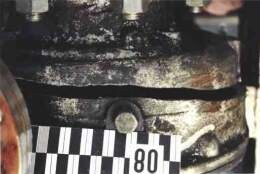In a SEVESO-rated oil depot at 5:20 am, a truck driver notified a technician after observing an anomaly on pumping plant no. 1. The technician manually closed the pump feed valve, and the site was placed in safe operating mode by activating the emergency shutdown routine. Fuel flowed into the hydrocarbon separator, whose float stop valve was operational; the valve did not instantaneously close and pollution reached the SEINE River (iridescence over its entire width along a 3-km stretch). No measures however were implemented to treat the pollution and downstream pumping stations were shut down; the discharge ceased. A technician closed the valve upstream of the discharge. A specialised firm was called to pump 80 cm of fuel oil into the retention basin. The rest of the depot and then pumping plant no. 1 were brought back online 4 and 7 days later, respectively. Property damage, operating losses and decontamination costs were estimated at 112,000, 61,000 and 23,000, respectively. The Classified Facilities Inspectorate recorded these findings. An investigation determined that the housing of an idle backup pump had cracked, leading to a 240-m³ fuel oil spill since both the upstream and downstream valves on all pumps had been systematically left open. This rupture was caused by an accumulation of excessive stresses due to a poor support for pump lines, their accessories and misalignment on the pump. The phenomenon was exacerbated by the type of volute casing (grey cast iron). Hydrocarbon detection in the basin had been inhibited after works carried out to servo-control the closure of tank foot valves to such detection. The hydrocarbon separator featured a densimetric gate (floats), which halted discharge into the SEINE; automated closure was not immediate however, as 500 litres of fuel oil overflowed into the river. The faulty pump was used as a backup and had remained idle during the incident, yet the site was being managed in a way that valves remained permanently open. The pump condition was appraised. The operator adopted several measures: monitoring by personnel until the completion of works, closure of backup pumps both upstream and downstream, a servo-control design tying the valve upstream of the discharge to hydrocarbon detection. The Inspectorate requested additional measures: installation of a floating boom, integration of this scenario into the safety report, piezometric monitoring, and pump valve supervision.
Download the detailed report in .pdf format (160 Kb)





